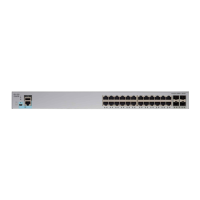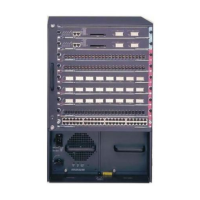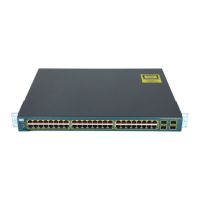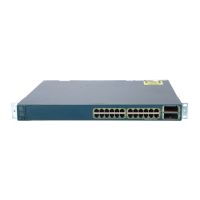8-47
Catalyst 2900 Series XL and Catalyst 3500 Series XL Software Configuration Guide
78-6511-05
Chapter 8 Configuring VLANs
Load Sharing Using STP
Load Sharing Using STP Port Priorities
When two ports on the same switch form a loop, the STP port priority setting
determines which port is enabled and which port is in standby mode. You can set
the priorities on a parallel trunk port so that the port carries all the traffic for a
given VLAN. The trunk port with the higher priority (lower values) for a VLAN
is forwarding traffic for that VLAN. The trunk port with the lower priority (higher
values) for the same VLAN remains in a blocking state for that VLAN. One trunk
port transmits or receives all traffic for the VLAN.
Figure 8-5 shows two trunks connecting supported switches. In this example, the
switches are configured as follows:
• VLANs 8 through 10 are assigned a port priority of 10 on trunk 1.
• VLANs 3 through 6 retain the default port priority of 128 on trunk 1.
• VLANs 3 through 6 are assigned a port priority of 10 on trunk 2.
• VLANs 8 through 10 retain the default port priority of 128 on trunk 2.
In this way, trunk 1 carries traffic for VLANs 8 through 10, and trunk 2 carries
traffic for VLANs 3 through 6. If the active trunk fails, the trunk with the lower
priority takes over and carries the traffic for all of the VLANs. No duplication of
traffic occurs over any trunk port.
Figure 8-5 Load Sharing by Using STP Port Priorities
15932
Switch 1
Switch 2
Trunk 2
VLANs 3-6 (priority 10)
VLANs 8-10 (priority 128)
Trunk 1
VLANs 8-10 (priority 10)
VLANs 3-6 (priority 128)
